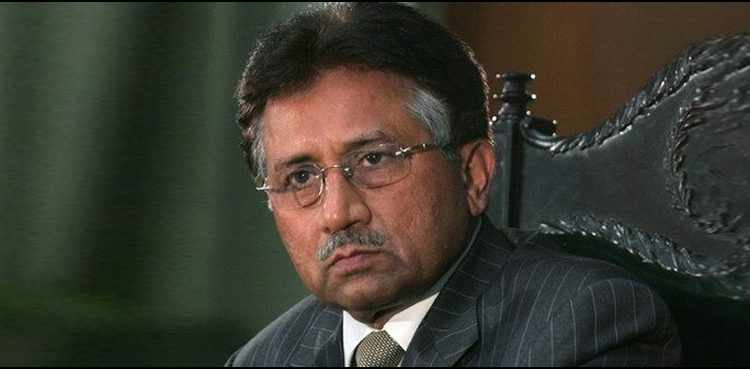The current anti-American trend in Pakistan harboured and used by a part of political spectrum as well as displayed in public outbursts runs completely contrary to their long though erratic relationship.
This antagonism is also quite ironical as the policy of associating Pakistan with the western world was greatly favoured by father of the nation who grasped right at the inception of the country that the power void created by the UK quitting the region would ultimately be filled by America and that since Pakistan was a legatee of western colonialism therefore its natural association would be with the western bloc. It was therefore the imperative strategic needs that witnessed Pakistan to join security alliances initiated by the US as early as 1954 and openly acknowledged itself to be part of the wider western alliance system in South and Central Asia.
The relationship that began in the 1950s went on in a topsy-turvy manner till the current times and is sustained by mutual interests.
In this context Pakistan in 1954 signed the Mutual Defence Assistance Agreement (MDAA) with the US and became a member of SEATO in September 1954 and a year later joined the US sponsored Baghdad Pact that was later titled CENTO with the aim to prevent spread of communism with the help of US military and economic aid. In this respect Pakistan became recipient of military aid to Pakistan and received weapons system that were not required by the US but were of significant value to Pakistan enhancing its defence potential and paved the way for strengthening its military making it possible for it to defend itself from any adventure by its belligerent neighbour.
The relationship initially remained quite healthy for a decade. In the period between 1964 and 1965 the US disbursed military aid to Pakistan to the tune of $4 billion as adjusted to the current figures. In addition the US also provided around $15.7 billion as economic assistance along with many American advisers coming to Pakistan for guiding efforts in many sectors.
Pakistan did benefit from the supply of US military hardware and from the various military training programmes, majority of which were gratis. In turn Pakistan acted as bulwark against spread of communism with Pakistan providing an air base from where the US spy planes flew strategic reconnaissance missions over Russia and China. Pakistan was made a target of the Soviet enmity when they shot down an American U-2 spy plane that was operating from a Pakistani air base.

The subsequent Soviet policy towards Pakistan was that it held Pakistani alliance with America as a hostile act by the Soviets during the Cold War period following the end of WW II. USSR not surprisingly aligned itself with India and threatened the use of its veto power to sabotage any meaningful implementation of the UN Resolution on the subject of holding a plebiscite on the Indian-occupied Jammu and Kashmir. This bitterness lingered on for a considerably long time and even today the relationship with Russia, successor of the Soviet Union, and Pakistan cannot be termed as ideal.
The first major hurdle that came in US-Pakistan alliance was the American imposition of sanctions on export of American military hardware to both India and Pakistan during the 1965 Pak-India war. Pakistan faced tremendous difficulties once the supplies of American military hardware stopped and the Pakistani leadership reacted by distancing itself from the US. Even if the American embargo could be justified when read with the fine prints of the Agreement, the fact that Pakistan was under attack by a country whose nonaligned status notwithstanding was totally in the Soviet camp, the champion of communism, the American action is difficult to comprehend.
The American decision may also have something to do with Pakistan earlier politely declining to be a coalition partner of the US in the Vietnam conflict and the arms embargo in 1965 could well have been initiated to punish Pakistan for its Vietnam stance.
After 1965 Pak-US relationship remained dormant till they came together in 1980s and this phase lasted for almost a decade. In this context, Pakistan voluntarily joined the US and Saudi Arabia to oust the Soviet forces from Afghanistan.
This active collusion exhausted the Soviet Union that met defeat in the field and by 1988 had to withdraw from Afghanistan. Moreover, the financial burden on the USSR of its misconceived Afghan policy played a large part in the break-up of the Soviet Union in 1990. In this context the US provided almost $3 billion to Afghan militants along with giving $9.2 billion in economic and $3.8 billion in military assistance to Pakistan.
One additional benefit of this alliance was that America ignored the progress of Pakistan’s nuclear weapons programme as long as the Soviet Afghan adventure was in the play. On the flip side Pakistan had to endure the never-ending burden of accommodating over three million Afghan refugees along with getting exposed to the drugs and gun culture of the Afghan refugees spread like wildfire and violent crimes statistics in the country increased exponentially. One crucial legacy of this phase of alliance was the emergence of militancy and subsequent creation of Al-Qaeda that became an extremely problematic factor within Pakistan and abroad.

The mushroom growth of the Taliban and a host of splinter groups within Pakistan and at the international level that employed religion to justify violence and acts of terror became a great source of unrest that is still creating problems for Pakistan
The havoc spread by extremist groups brought America back to Pakistan after a decade as in the intervening years America has left Pakistan in a lurch to tackle the remnants of Afghan jihad.
In this phase beginning from 2001 Pakistan was made the most allied non-NATO country for America in its bid to fight its war on terror. For this purpose Pakistan provided an air corridor to the US to conduct offensive air raids against the Taliban in Afghanistan along with giving full access to the main port of Karachi for logistics supply.
Pakistan was provided with financial assistance mainly through reimbursing an amount of $30 billion under the heads of economic assistance, military aid and Coalition Support Fund during the war on terror that lasted till 2021. It must be kept in view that it paid a very heavy price for maintaining this alliance as more them 70,000 Pakistani civilians lost their lives in this war along with bearing over $120 billion losses in revenue under various heads.

As could be clearly deduced, Pakistan has not adequately benefitted from its alliance with America. Throughout its existence, the relationship remained transactional with lack of mutual trust keeping it on tenterhooks. The recent US withdrawal from Afghanistan has further complicated the Pak-US understanding of each other as the Americans now blame Pakistan for failure of their Afghan policy without realising that Pakistan had nothing to gain from not cooperating with Americans.
Despite being closely aligned with the US throughout its existence Pakistan is still a very vulnerable country beset by myriad problems. Instead of appreciating the problems encountered by Pakistan the US policy makers are taking an anti-Pakistan line that is proving harmful for the country.









